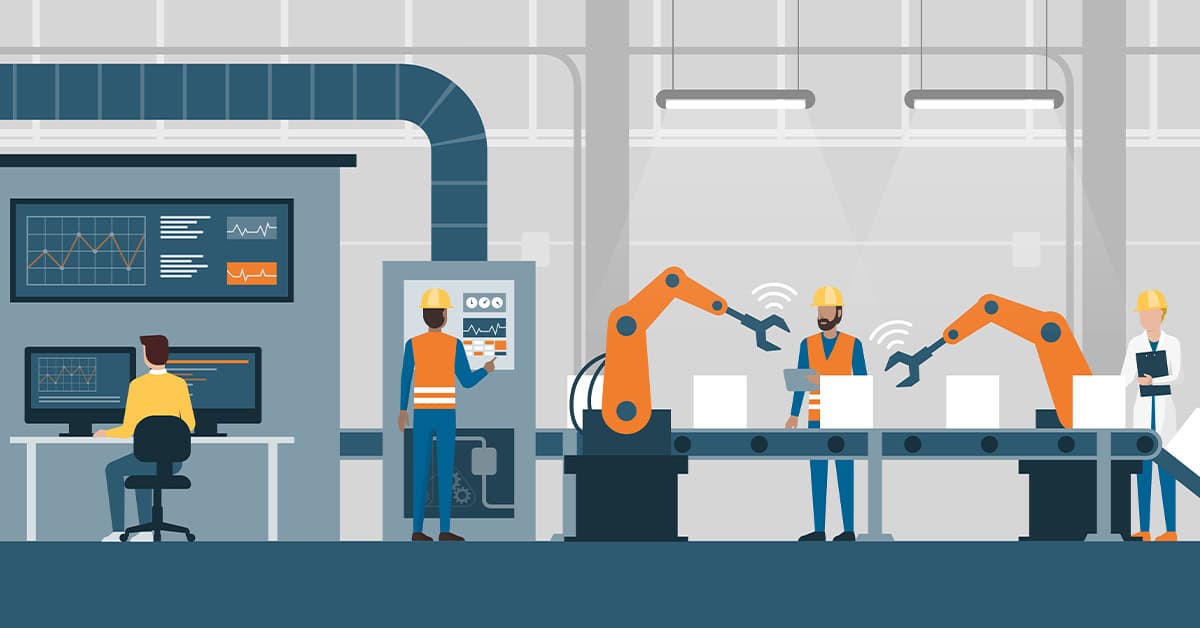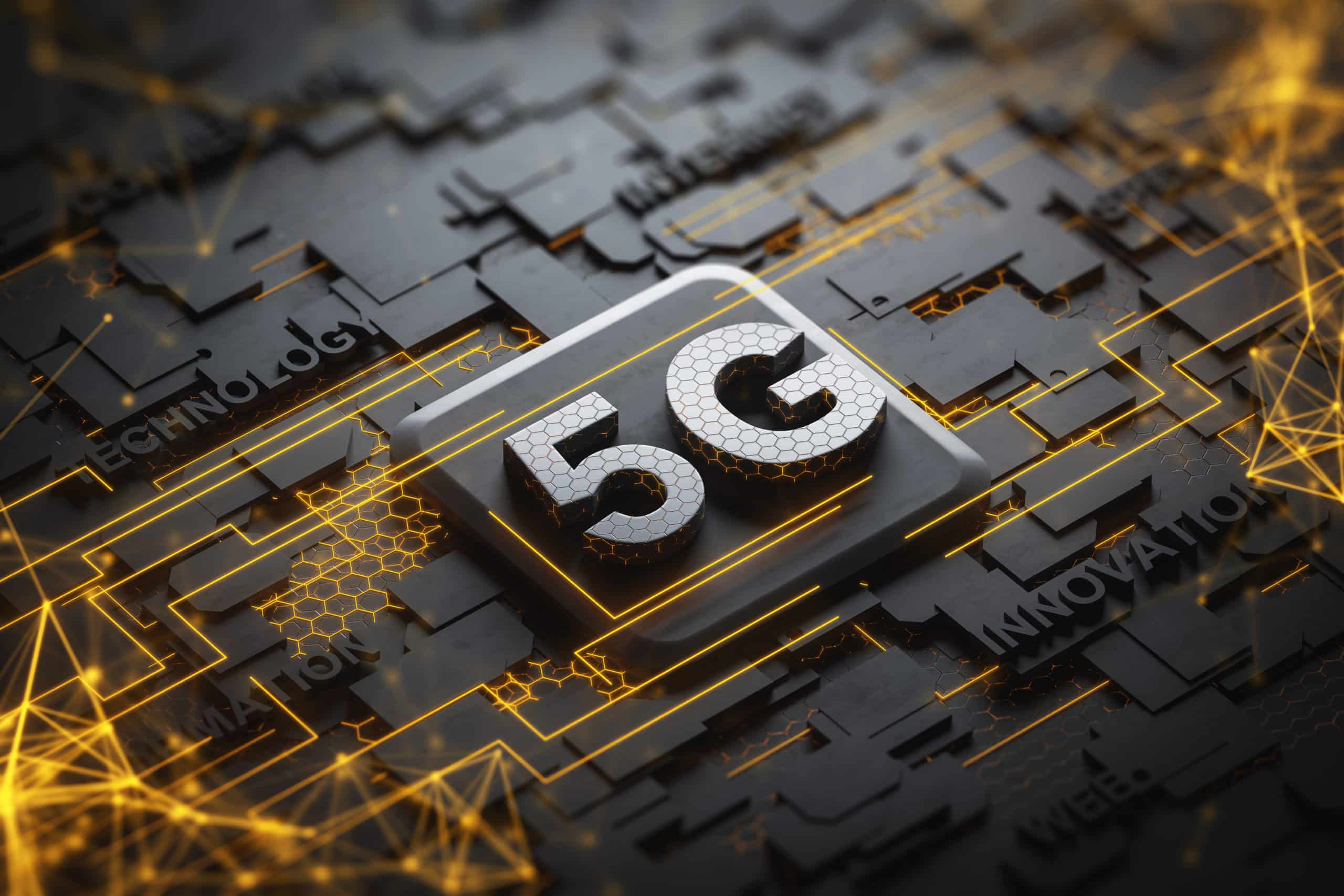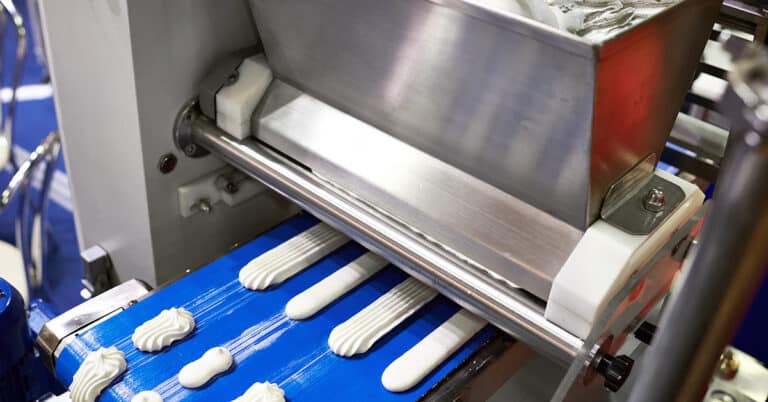We are about to experience a revolution in mobile connectivity — one that will impact our personal devices such as smartphones but will also, to an even greater degree, facilitate new frontiers in connectivity and communication throughout industrial facilities. This revolution is built on 5G mobile services — the next step in speed and bandwidth, building upon the capabilities of the current 4G system with speed improvements up to 20 times.
The advances of 5G offer numerous capability advantages over 4G technology, including:
- Increased upload and download speeds, facilitating the faster transfer of content and media such as video
- Vastly decreased latency, now ranging from 50 milliseconds to 1 millisecond
- Increased bandwidth to handle more processes simultaneously
Most importantly for industrial companies and manufacturers, 5G and IIoT (Industrial Internet of Things) advances will go hand in hand — enhancing IIoT technology that is available or in place, and opening doors for IIoT implementations to improve productivity, efficiency and operations effectiveness. In the next section, we will explore some of the possibilities that 5G IIoT presents.
5G and IIoT: Boosting the performance of the modern industrial facility
5G industrial Internet will impact every area of the connected facility. Before we look at the specific improvements that 5G offers, let’s review the ways in which IIoT helps industrial operations — at any speed — 4G or 5G:
- Performance and machine health monitoring: Through connected sensors, IIoT enables unprecedented monitoring of, and insights into, the performance and health of industrial equipment. Machine sensors are able to gauge and communicate early warning signs such as temperature fluctuations and vibration aberrations. These red flags can indicate potential performance issues well before they cause a production interruption or shutdown — allowing much greater control over maintenance planning.
- Remote access: Especially in the face of the difficulties presented by COVID-19, the ability to conduct operations remotely is more important than ever. IIoT hardware and software facilitate remote work by enabling equipment monitoring and control from anywhere, allowing personnel to carry out key functions without being on-site.
- Automation augmentation: In addition to helping employees fulfill their duties from anywhere, IIoT technology augments automation by delivering more data and information that automation and AI systems can use to optimize automated functions. By continuing to provide more data with which to work, IIoT sensors and software can enable increased automation, efficiency and productivity.
- Maintenance enhancements: With more information about equipment performance, delivered closer to real-time, IIoT can streamline and optimize maintenance operations. IIoT nearly eliminates unplanned downtime — identifying potential issues well before they cause a catastrophic shutdown and enabling leaders to develop a proactive maintenance strategy.
- Safety improvements: By improving maintenance and machine performance, IIoT creates a safer facility that is far less prone to unexpected incidents and dangers to employees.

With an understanding of the benefits of IIoT, we can now look at IIoT 5G possibilities. These are the ways in which improved communications and connectivity can take these advantages to the next level:
- Improved remote access: The upgrade from 4G to 5G will take technology such as video monitoring — already heavily used — to the next level of performance. 5G enables high-definition monitoring and multiple video streams to and from anywhere. Previously, this level of fidelity could only be achieved on-site through hard-wiring and analog monitoring technology. Now, however, it can be accessed from anywhere — thanks to the increased bandwidth of 5G.
- Reduced latency: 5G IIoT helps industrial facilities realize the promise of near real-time monitoring and control, with latency reduced to as little as 1 millisecond. In highly sensitive operations, this latency reduction can make all the difference in enabling remote monitoring or catching maintenance issues just in time.
- Unparalleled reliability: When IIoT monitoring is heavily in use, connectivity reliability is a critical concern. If the system goes down or experiences interruptions, it is essentially useless — and puts all operations at risk. The increased speed and bandwidth of 5G creates a major boost in reliability.
- Increased access channels: 5G industrial Internet increases bandwidth to the point that multiple access streams are possible. This includes high-definition video to multiple monitoring stations — improving reliability and safety through redundancies.
At ATS, we offer vast expertise in maintenance solutions — including IIoT technology — to improve operational efficiency, machine uptime and overall productivity. ATS has decades of industrial maintenance and MRO experience with a focus on technology. We are ready to help you leverage a comprehensive solution to capture machine data, analyze it and use it to implement the improvements that will keep plant operations up and running. For more information, contact ATS today.






